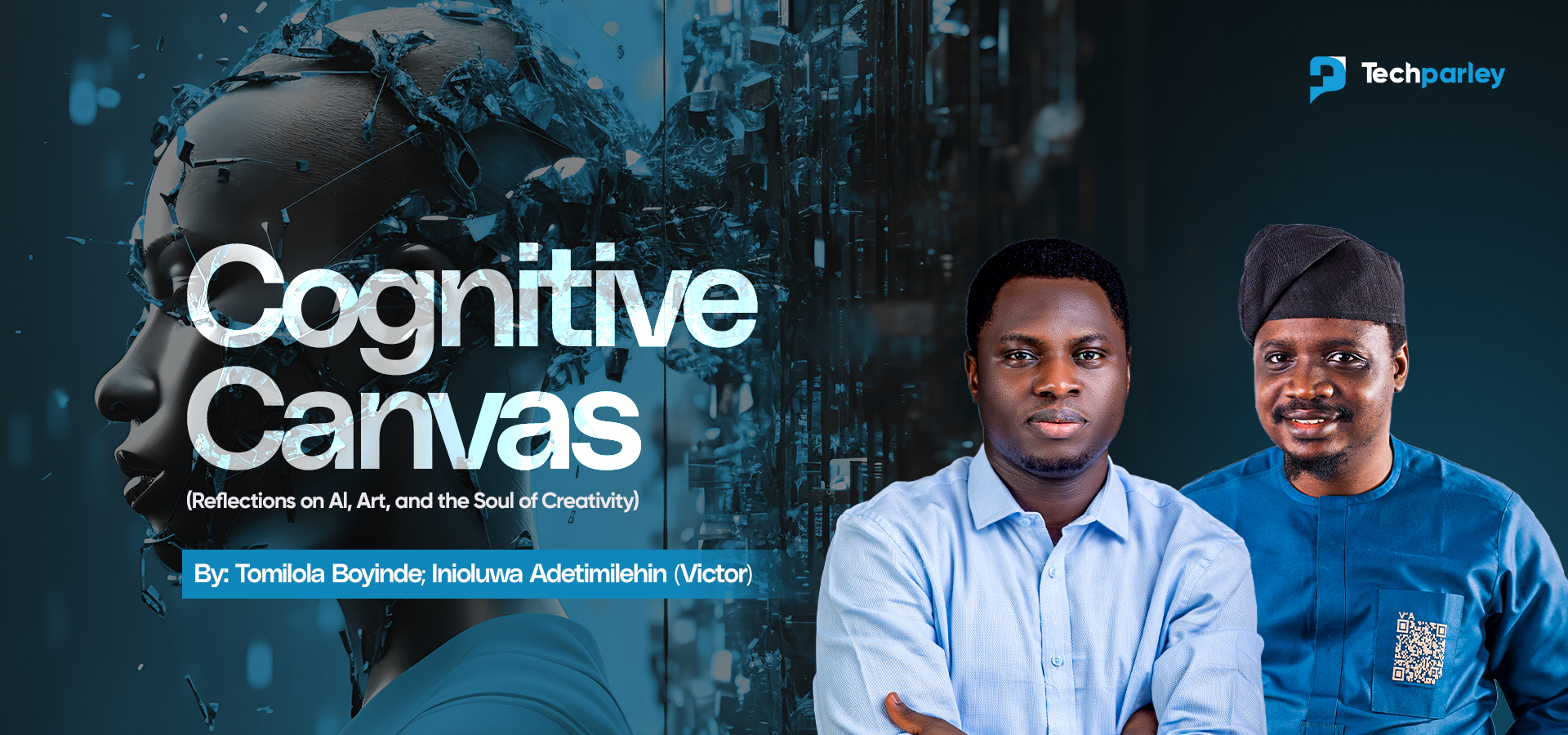There is a quiet revolution unfolding across creative industries. From writers and designers to musicians and filmmakers, we are all standing at the edge of a transformation that offers both power and peril.
Generative AI has made it possible to sketch, write, compose, or edit at a speed once unimaginable, but within that acceleration lies the risk of letting the machine think for us. As creatives, we must define AI’s role in our process. Will it serve as a silent partner that amplifies imagination, or will it become an invisible master shaping our voice without permission? The answer must remain clear: we are the experts, and AI is the assistant.
It can extend our capacity, test our ideas, and simulate possibilities, but it cannot replace our creative agency. When we outsource the essence of our thinking, we lose what makes our work distinct. Creativity is not about perfect execution but about the messy, intuitive process of connecting meaning and emotion. What makes a piece of work truly ours is not polish, but presence, the unmistakable imprint of our soul. That, no algorithm can automate.
Rethinking the Assistant Model
The most sustainable way to integrate AI into creative practice begins with reframing it as a tool that supports, not supplants, human thinking. The danger of giving AI too much authority is not just about plagiarism or ethics. It is about passivity. When we let AI take the driver’s seat, we risk flattening the quirks, instincts, and intuition that define originality. AI challenges our understanding of what it means to create and whether originality can exist in outputs that rely on statistical mimicry (Sarkar, 2023).
Research has shown that while AI can spark more ideas, it also tends to make those ideas more similar. A study reported by The Guardian found that AI-assisted writing often increases output but narrows diversity in style and perspective. This happens because AI models are built on patterns of what already exists. They can remix and reorganize, but they rarely risk. Creativity, on the other hand, thrives on risk, on the decision to explore an uncertain direction because it feels alive.
That is why the assistant model matters. It positions AI as a powerful extension of our cognition rather than its replacement. In discussions at Columbia Business School, industry experts described this balance as “AI-augmented human creativity.” The most effective creators are those who use AI to accelerate iteration, not to automate authorship. AI becomes a sparring partner that provokes thought, a laboratory that helps us test possibilities faster, and a mirror that reflects our tendencies back at us.
When you treat AI as your assistant, you begin to lead the conversation. You prompt, evaluate, and filter its suggestions. You retain the final say. And in doing so, you keep your human agency intact.
Keeping Your Voice in the Ideation Stage
Ideas are the heartbeat of any creative process. This is also the stage where AI’s potential is most visible and most dangerous. Generative tools can flood us with hundreds of prompts, sketches, and concepts in seconds. That speed is intoxicating. But without a clear creative compass, it can also lead to overreliance, where AI’s convenience slowly replaces curiosity.
To maintain ownership, the key is to feed the system your thinking, not just a task. Instead of asking a model to “generate five campaign ideas,” try “generate five variations based on this metaphor or story I have been exploring.” The quality of your input determines the integrity of the output. In this way, AI acts less like a vending machine and more like a collaborator that learns your rhythm.
One powerful exercise is to use AI as a mirror of your thought process. Ask it to analyze your writing or creative style: where do you repeat yourself, where do you lose clarity, what biases show up in your tone? Then argue with it. Challenge its conclusions. In that tension, you begin to learn more about your own mind. What some might call repetition in writing could actually be a deliberate spiral logic, a way of revisiting ideas from new angles until they deepen. AI can help you see that pattern, not by rewriting you, but by illuminating what already makes you distinct.
At its best, AI becomes a companion in reflection. It helps you stretch the boundaries of your thought without taking control of it. You still lead the dance. The machine follows.
Crafting with the Machine
Execution is where the partnership between human and machine becomes tangible. It is tempting to let AI handle the laborious parts such as structuring drafts, editing, or generating visuals, but the creative act still belongs to you. The challenge is to decide which parts of the process are worth automating and which must remain deeply human.
One effective method is to let AI handle scaffolding while you handle substance. You might ask for an outline, a mood board, or a first draft skeleton, then rebuild it in your own voice. You can even instruct the AI to produce multiple phrasings or design options, not so you can copy them, but so you can respond to them. Each suggestion becomes a question: Would I have thought of that? Why does this not feel like me? That dialogue sharpens your creative judgment.
AI can also be a remarkable diagnostic tool. You can ask it to examine your work for logical gaps, weak arguments, or stylistic inconsistencies. Instead of rewriting, it highlights what needs your attention. You remain the editor. This method transforms AI from a ghostwriter into a feedback loop. It provides the rigor that might be exhausting for human collaborators, especially when deadlines are tight.
In other mediums such as design, music, or film, the same logic applies. Use AI to generate prototypes, color palettes, or soundscapes, but resist the urge to accept its first output as final. The artistry lies in how you manipulate, remix, or challenge what the model produces. Each decision you make keeps the humanity in the work. When creatives use AI as a tool for experimentation rather than substitution, they reclaim authorship while benefiting from technological acceleration.
Staying Accountable for What You Create
Perhaps the most overlooked dimension of this conversation is responsibility. AI can assist in producing, refining, and even predicting, but it cannot take responsibility for outcomes. That remains the human domain. When you release something into the world, whether an article, a design, or a campaign, you are accountable for its impact, its message, and its potential harm. That is not a duty that can be delegated to an algorithm.
This is why agency matters beyond aesthetics. The more we depend on AI to decide what is good, the more we risk detaching from ethical awareness. In marketing, design, and storytelling, every creative decision shapes perception. If AI becomes the silent decision-maker, we risk normalizing what is convenient over what is conscientious. Studies from MIT Sloan Management Review on AI in creative work reveal that while AI boosts productivity, it often reduces deliberation, the human pause where ethical reflection happens.
To stay accountable, creatives must build reflective loops into their process. After every major decision, ask: Why this choice? What values guide it? Would I still stand by it if no AI were involved? This discipline not only safeguards integrity but also ensures that our creativity continues to serve humanity rather than machinery.
The assistant model reinforces this mindset. It reminds us that AI’s intelligence is derivative. It learns from us, from the world we built. We owe it to ourselves to remain the moral and intellectual center of our craft.
Concluding Thought
To redefine the creative workflow in this era is to remember where the human ends and the machine begins. The future will not belong to those who outsource their imagination but to those who know how to harness technology without losing their soul in the process.
When we treat AI as a collaborator, never as a master, we preserve what is most vital about creativity: the ability to feel, to wonder, to decide. We can use AI to accelerate our thinking, test ideas, and simulate possibilities, but the meaning, the emotion, and the responsibility must remain ours.
In this partnership, we do not create dead beauty, works that are technically perfect but spiritually hollow. Instead, we create living art, infused with curiosity and conscience, guided by human depth and digital precision. That is the new creative equilibrium: AI as assistant, not master.
References
- Sarkar, A. (2023). Generative AI and the Question of Creativity. URL: https://arxiv.org/pdf/2307.10751
- The Guardian (2024). AI prompts can boost writers’ creativity but result in similar stories, study finds. URL: https://www.theguardian.com/technology/article/2024/jul/12/ai-prompts-can-boost-writers-creativity-but-result-in-similar-stories-study-finds
- Columbia Business School (2024). Beyond Binary: Rethinking the Role of AI in Creative Industries. URL: https://business.columbia.edu/insights/digital-future/beyond-binary-rethinking-role-ai-creative-industries
- MIT Sloan Management Review (2024). How Generative AI Changes Creative Work. URL: https://sloanreview.mit.edu/article/how-genai-changes-creative-work/
- ResearchGate (2024). Product Design: The Evolving Role of Generative AI in Creative Workflows. URL: https://www.researchgate.net/publication/390999724_Product_Design_The_Evolving_Role_of_Generative_AI_in_Creative_Workflows
Authored by:
Adetimilehin inioluwa Victor – Serial Creative: Poet | Essayist | Strategist | Founder:, Vic’Adex Concepts at vicadex.com
Adetimilehin Inioluwa Victor (Vic’Adex) is a serial creative and polymath who blends spoken-word poetry, painting, and communication to drive cultural innovations that advance human capital. Recognised among the top 10 contemporary spoken-word poets in Nigeria in 2015, he has since expanded his artistry into building creative safe spaces, thought leadership, and strategic communications. As an Engagement Manager at SCIDaR, he is shaping communication as a critical tool for improving social outcomes across the continent. Among his initiatives – each framed as “a Vic’Adex Concept”- are 60 Seconds Poet, Sip and Paint Abuja, and Vic’Adex Concepts & Aesthetic Resources. He continues to volunteer and contribute to social causes aligned with his creative and professional passions.
Tomilola Boyinde – Founder/CMO/Host, Bulbling247
Tomilola Boyinde is a serial creative, global marketing technologist and founder of Bulbling247, a global storytelling platform exploring creativity, technology, and innovation. He witnessed and documented the new world invention, innovation and emerging technologies exhibited at the World Expo Dubai. He has contributed to the marketing and growth of both Nigerian and global brands, blending strategy, creative storytelling, and technology to craft campaigns that resonate and inspire. With a passion for human-centered innovation, Tomilola champions untold stories, amplifies emerging voices, and drives creative solutions that connect culture, technology, and businesses globally.
The AI & Creativity series was birthed by the conversation on Bulbling247 podcast. Watch the episode here: https://www.youtube.com/watch?v=5kXatW9RMM8&t=1391s





